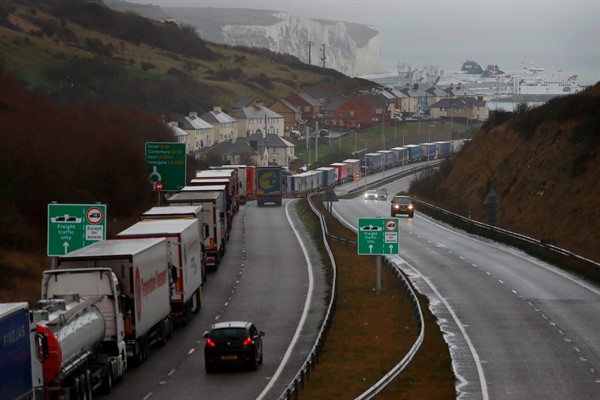The United Kingdom’s delayed departure from the European Union and the implementation of a hard-fought, post-Brexit trade agreement on Jan. 1 have led to the most significant rise in barriers between any major trading partners in recent memory. With trade volumes between the U.K. and the rest of the EU having grown significantly since the 1990s, particularly through the establishment of regional or global value chains, there is no meaningful precedent to draw on when projecting what comes next, other than the general experience that higher trade barriers mean less trade and more economic loss. It is early days, but so far this forecast looks accurate.
The U.K. formally left the EU in January 2020, but trade relations remained unchanged until Dec. 31 due to a one-year transition period that allowed just enough time for negotiations over the new trade deal, which concluded on Christmas Eve. The speed of the talks, and the time between finalizing the agreement and implementing it, were both significantly quicker than usual international practice. This means that traders will not have had a chance to familiarize themselves with the new rules before starting to trade under them.
Fundamentally, U.K.-EU trade relations changed on Jan. 1 from a permissive to a prescriptive system. Before then, businesses could assume that any trade between Britain and the EU was legal and would not require special checks, whether on sensitive goods like meat or on services requiring travel or professional qualifications. There are some restrictions that apply to trade between members of the bloc—the EU single market is often referred to as incomplete, particularly in services—but these are few and far between.

